Filter by
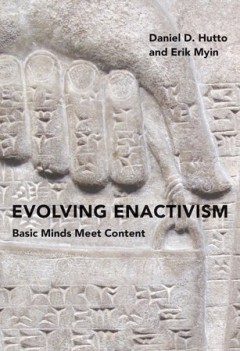
Evolving enactivism :basic minds meet content
Evolving Enactivism" argues that cognitive phenomena - perceiving, imagining, remembering -- can be best explained in terms of an interface between contentless and content-involving forms of cognition. Building on their earlier book Radicalizing Enactivism, which proposes that there can be forms of cognition without content, Daniel Hutto and Erik Myin demonstrate the unique explanatory advantag…
- Edition
- -
- ISBN/ISSN
- 9780262339773
- Collation
- 1 online resource (xxvi, 328 pages).
- Series Title
- -
- Call Number
- -
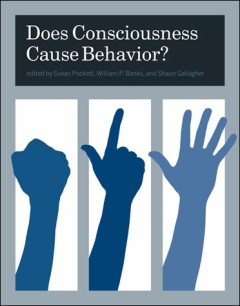
Does Consciousness Cause Behavior?
Continuing the debate over whether consciousness causes behaviour or plays no functional role in it, leading scholars discuss the question in terms of neuroscience, philosophy, law and public policy.OCLC-licensed vendor bibliographic record.
- Edition
- -
- ISBN/ISSN
- 9780262281690
- Collation
- 1 online resource (vi, 364 pages) :illustrations
- Series Title
- -
- Call Number
- -

The Elm and the Expert: Mentalese and Its Semantics
"A Bradford book."OCLC-licensed vendor bibliographic record.
- Edition
- -
- ISBN/ISSN
- 0585020515
- Collation
- 1 online resource (xii, 128 pages) :illustrations.
- Series Title
- -
- Call Number
- -
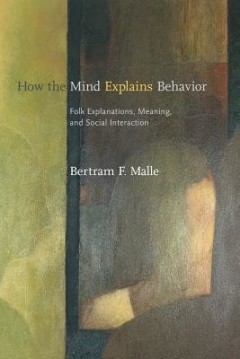
How the mind explains behavior : folk explanations, meaning, and social inter…
"A Bradford book."In this provocative monograph, Bertram Malle describes behavior explanations as having a dual nature -- as being both cognitive and social acts -- and proposes a comprehensive theoretical model that integrates the two aspects. When people try to understand puzzling human behavior, they construct behavior explanations, which are a fundamental tool of social cognition. But, Mall…
- Edition
- -
- ISBN/ISSN
- 9780262278935
- Collation
- 1 online resource (viii, 314 pages).
- Series Title
- -
- Call Number
- 150 MAL h
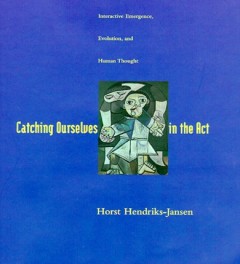
Catching Ourselves in the Act: Situated Activity, Interactive Emergence, Evol…
"A Bradford book."OCLC-licensed vendor bibliographic record. Catching Ourselves in the Act uses situated robotics, ethology, and developmental psychology to erect a new framework for explaining human behavior. Rejecting the cognitive science orthodoxy that formal task-descriptions and their implementation are fundamental to an explanation of mind, Horst Hendriks-Jansen argues for an alternative…
- Edition
- -
- ISBN/ISSN
- 9780262275262
- Collation
- 1 online resource (xii, 367 pages).
- Series Title
- -
- Call Number
- -
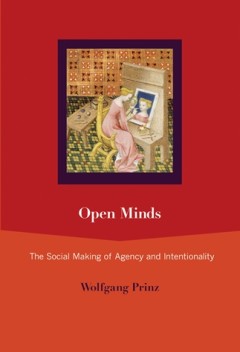
Open minds :the social making of agency and intentionality
A novel proposal that the cognitive architecture for volition and cognition arises from particular kinds of social interaction and communication.In Open Minds, Wolfgang Prinz offers the novel claim that agency and intentionality are first perceived and understood in others, and that it is only through practices and discourses of social mirroring that individuals come to apply these features to …
- Edition
- -
- ISBN/ISSN
- 9780262301695
- Collation
- 1 online resource (xvi, 341 pages)
- Series Title
- -
- Call Number
- -
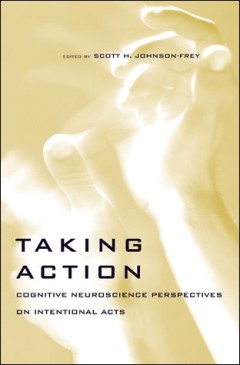
Taking Action: Cognitive Neuroscience Perspectives on Intentional Acts
A Bradford book."Recent cognitive neuroscientific research that crosses traditional conceptual boundaries among perceptual, cognitive, and motor functions in an effort to understand intentional acts. Traditionally, neurologists, neuroscientists, and psychologists have viewed brain functions as grossly divisible into three separable components, each responsible for either perceptual, cognitive, …
- Edition
- -
- ISBN/ISSN
- 9780262276337
- Collation
- 1 online resource (viii, 413 pages, 12 unnumbered pages of plates) :illustrations (some color)
- Series Title
- -
- Call Number
- -
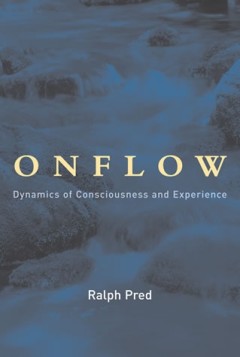
Onflow :dynamics of consciousness and experience
"A Bradford book."Understanding consciousness by taking the stream of consciousness seriously; a general characterization of experience and a detailed description of experience from within, drawing on theories of William James, Alfred North Whitehead, John Searle, and Gerald Edelman.In Onflow, Ralph Pred supplies an account of the nature of consciousness that grapples with "the raw unverbalized…
- Edition
- -
- ISBN/ISSN
- 9780262281881
- Collation
- 1 online resource (xii, 348 pages)
- Series Title
- -
- Call Number
- -

A mark of the mental :in defense of informational teleosemantics
Drawing on insights from causal theories of reference, teleosemantics, and state space semantics, a theory of naturalized mental representation.OCLC-licensed vendor bibliographic record.
- Edition
- -
- ISBN/ISSN
- 9780262339865
- Collation
- 1 online resource (xv, 327 pages) :illustrations.
- Series Title
- -
- Call Number
- -
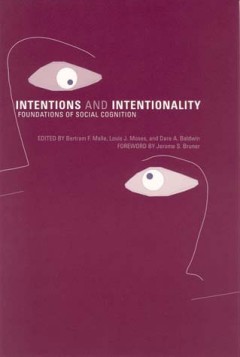
Intentions and intentionality : foundations of social cognition
"A Bradford book."Social interaction requires social cognition - the ability to perceive, interpret, and explain the actions of others. This ability fundamentally relies on the concepts of intention and intentionality. For example, people distinguish sharply between intentional and unintentional behavior; identify the intentions underlying others' behavior; explain completed actions with refere…
- Edition
- -
- ISBN/ISSN
- 9780262278942
- Collation
- 1 online resource (xiv, 417 pages) : illustrations.
- Series Title
- -
- Call Number
- -
 Computer Science, Information & General Works
Computer Science, Information & General Works  Philosophy & Psychology
Philosophy & Psychology  Religion
Religion  Social Sciences
Social Sciences  Language
Language  Pure Science
Pure Science  Applied Sciences
Applied Sciences  Art & Recreation
Art & Recreation  Literature
Literature  History & Geography
History & Geography